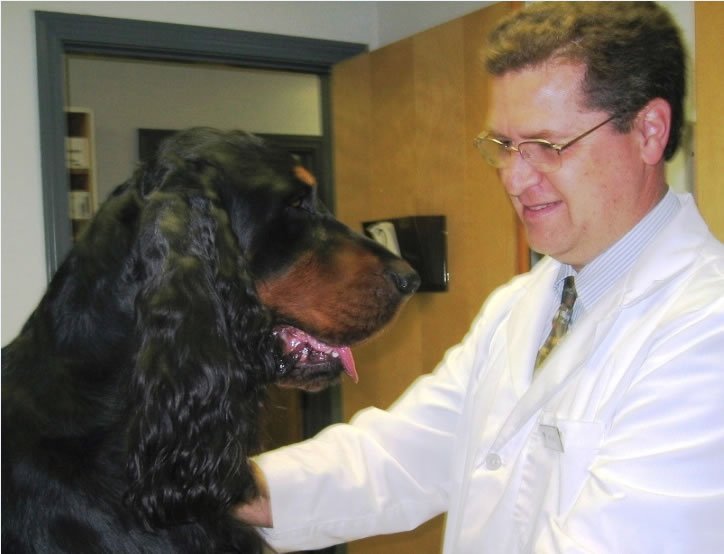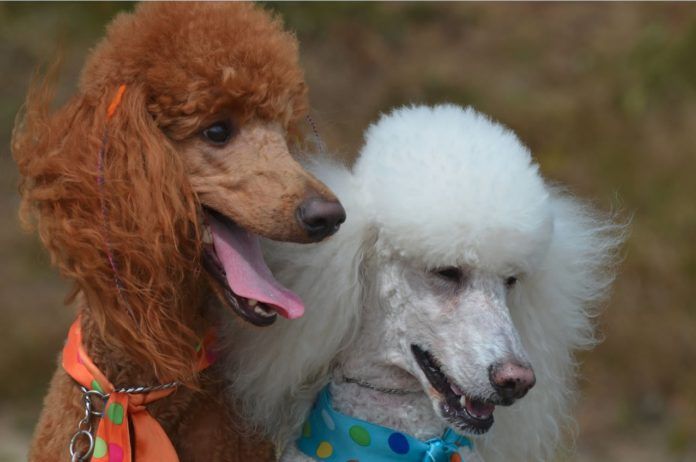© DejaVuDesigns | BigStock

People who rail against the intentional breeding of dogs point to the fact that there are already many mixed-breed dogs in this country who end up in shelters waiting to be adopted. For that reason, they say, nobody needs to be purposely mating dogs to create more pets still. They also argue that too many breeds have inbred problems — Dachshunds with herniated discs, pugs with faces so flat and noses so narrow they can’t breathe, shar peis with so many wrinkles in their skin they keep developing skin infections, and so on.
They are right on both counts — there are plenty of dogs sitting in shelters, or meeting their ends, because no one adopts them, and a number of breeds in which specific health problems of one kind or another tend to cluster more than in the dog population in general.
That said, someone who wants to love a dog is not obligated to adopt one from a shelter. He or she is entitled to love a specially bred puppy. Furthermore, if we’re being completely honest, even people who feel good about picking up a dog at the pound would probably not be happy if all dogs looked roughly the same with no breed characteristics whatsoever. And that’s what would happen if dogs mated randomly rather than were bred by people. They’d all eventually skew toward 45- to 50-poundish canines with somewhat bristly hair, most likely a shade of brown. No more “sort of like a border collie” or “brindle coat like a tiger.”
But what about the health problems genetically passed on from dog to dog, the ones that make so many Cavalier King Charles spaniels prone to heart disease, for instance, or a disproportionate number of Pomeranians with collapsing tracheas that make it difficult to breathe?
That’s where we can and should draw the line, says Jerold Bell, DVM, an adjunct professor of clinical genetics at the Tufts Cummings School of Veterinary Medicine.
Responsible and Irresponsible Breeders
There are “reputable, health-conscious breeders who are trying to select against disease states” common to various breeds, Dr. Bell says. For instance, he points out, the ridge on Rhodesian Ridgebacks that characterizes the breed is genetically linked with a serious skin condition called a dermoid sinus, which results in abscesses that can rupture the skin and cause great pain, even death in rare cases. But breeders working with scientists are trying to figure out how to separate the heritability of the ridge from the heritability of the skin problem. “Not all dogs with a ridge develop a sinus,” Dr. Bell says. People are looking right now at whether the two can be separated” in a consistent enough way to allow new Rhodesian ridgebacks to be born without the predilection for the health problem.
They have succeeded in separating desirable from undesirable breed traits before. Back in the 1970s, the spots on Dalmatians were genetically linked to a uric acid abnormality that led to bladder stones. Breeders included a pointer in their breeding program to introduce a normal gene for uric acid and today, “Dalmatians are percolating through the gene pool” who pass down perfect spots but not the predisposition to the health problem, Dr. Bell reports.
How does a breeder know ahead of time if a dog he wants to breed carries the gene for a disease or health condition common to that breed? There are open genetic databases that include screening results for dogs of the many breeds available, so a breeder can look up whether his dog’s sire or dam had the illness or carried liability genes. If the dog’s parents are not in any of the databases, the breeder can have genetic testing done on his own dog to see if the dog carries within him the chance of passing along a serious health problem through the generations.
Dr. Bell feels so strongly about the need to look up the genetic testing results of a dog’s parents before breeding him and having the dog himself genetically tested that he writes in Perspectives, an American Kennel Club newsletter, “Breeders who refuse to do pre-breeding health screening should be directed to find a hobby or profession that they can actually be good at. It is not ethical to breed dogs without selection for genetic health. Selection of healthy breeding stock is the most important aspect of maintaining breeds,” for without healthy dogs breeding, a breed will eventually decline in number.

Where the puppy buyer’s job comes in
Just as it is the responsibility of breeders to breed only those dogs who do not have the genes for health problems relatively common to the breed at issue, “official genetic screening results should be made available to…the purchasing public,” Dr. Bell says. “It doesn’t matter whether the breeder is a large commercial breeder, or only breeds once,” he adds. “It is no longer acceptable to say that genetic diseases just happen….not testing for documented breed-related hereditary diseases is irresponsible and unethical.”
Fortunately, databases are readily available for people wanting to buy a purebred puppy. One of the largest ones is compiled by the Orthopedic Foundation for Animals, which can be found at OFA.org. It is not just about orthopedic abnormalities inherited by dogs. In fact, there is a box in the upper left hand corner you can click on called “Tests by Breed,” which lists just about all of the tests that should be conducted in a dog up for consideration as a breeding dog. For instance, because Bernese mountain dogs are prone to von Willebrand’s disease, the most common inherited blood clotting condition in dogs, their DNA should be tested for that problem.
Disease-free sires and dams can then be registered on the site as such, and someone who wants to buy a puppy bred from that “couple” can feel confident that his pet won’t end up with the problem. If a breeder cannot point to documentation that a puppy will be free of the gene that causes a disease common to the breed, someone who wants to buy a purebred dog should take his business elsewhere. That is the surefire way to shut down breeding operations that are not actively working to breed out diseases common to a particular type of dog.
It will actually help the dog population in general, not just dogs who are bred. That’s because the diseases common to purebred dogs (allergies, hip dysplasia, heart disease, and so on) also occur in the general population of dogs, including mutts. It’s just that they tend to concentrate in those breeds. Once the illness is bred out of the breed, dogs who happen to be born through random selection by canines themselves will be less likely to inherit the propensity for developing those same illnesses.
The OFA database is getting more complete, Dr. Bell says. At this point, only 8 percent of breed clubs have not put testing requirements into the system, so for just about any breed, you can look up what diseases it is prone to and then ask the right questions of breeders — and either get the answers or move on.





